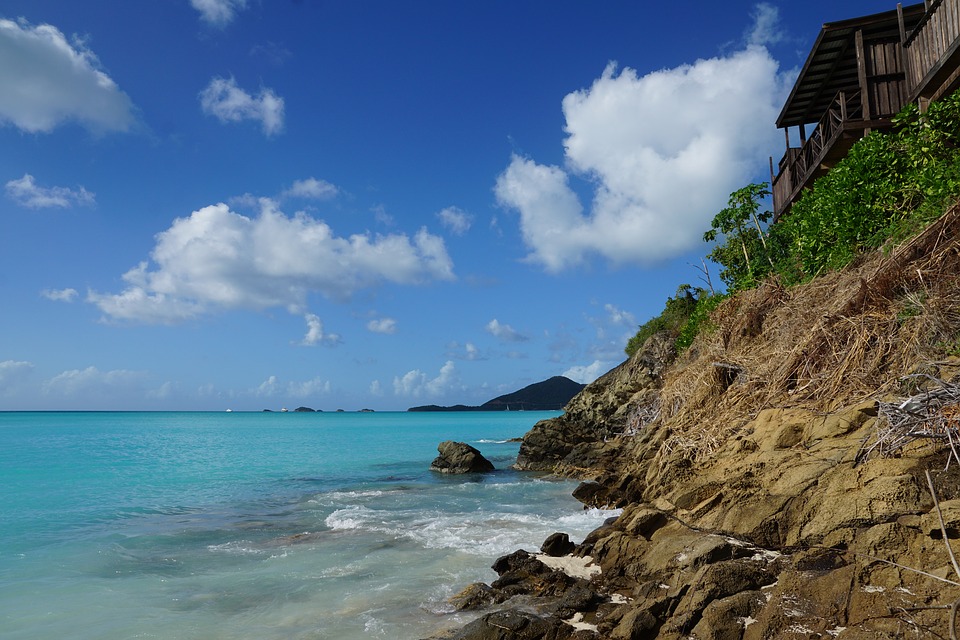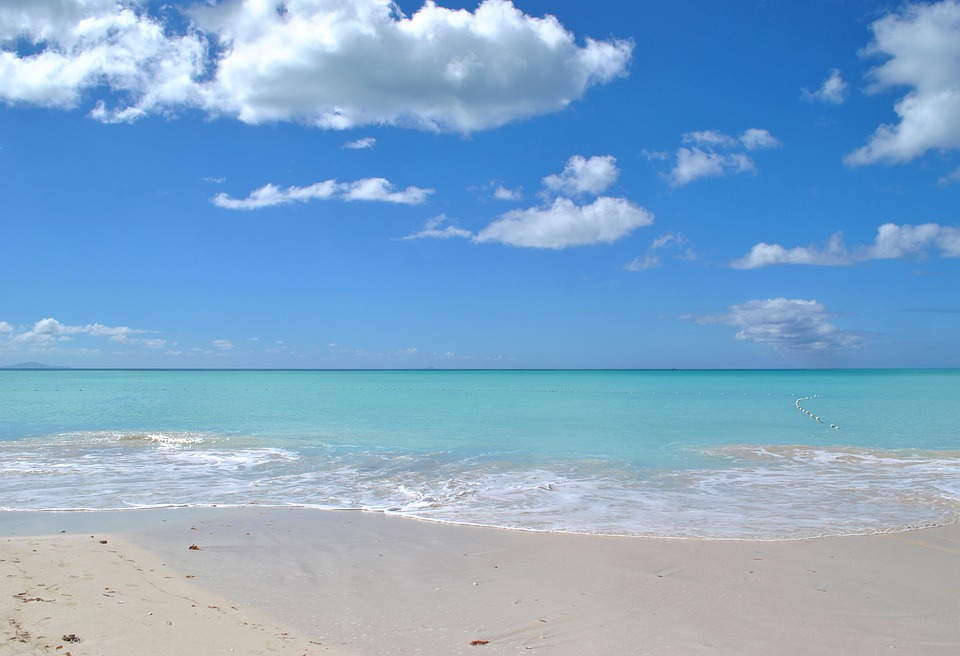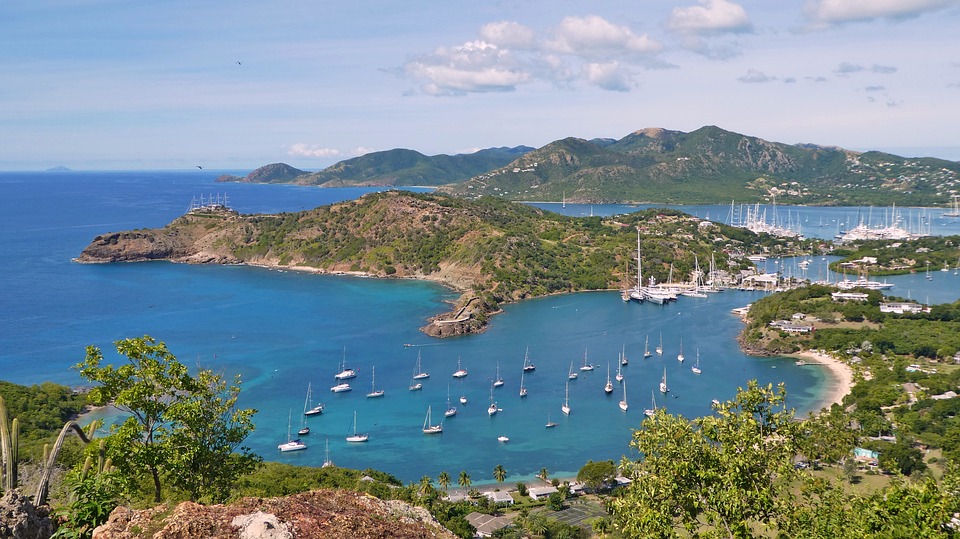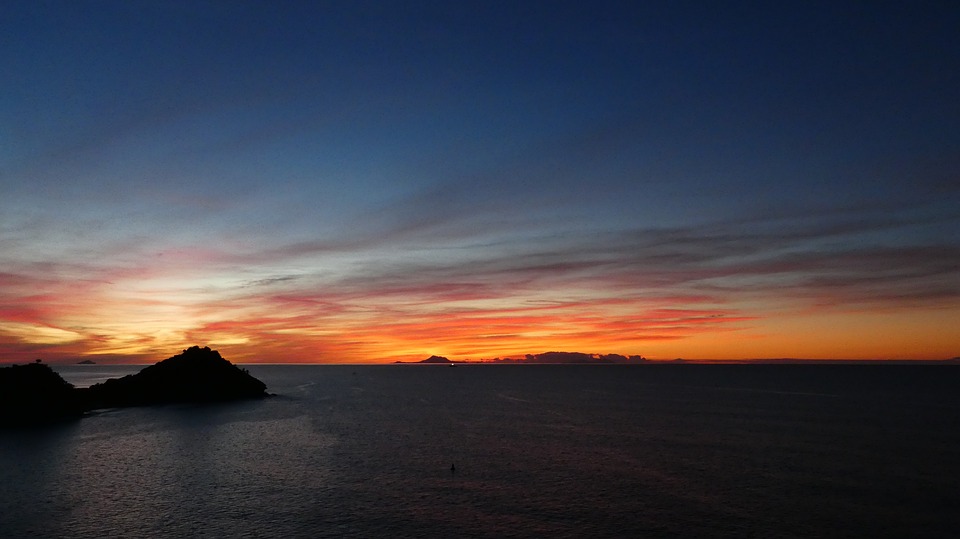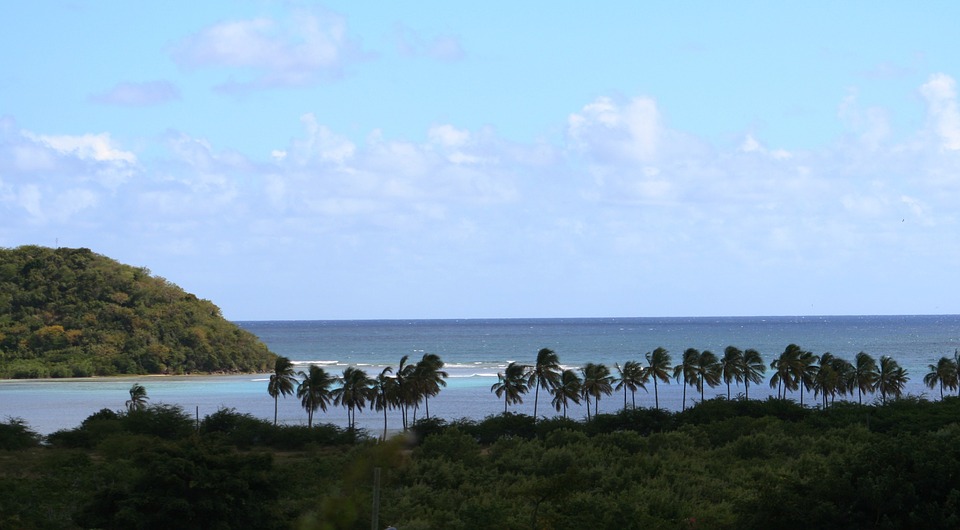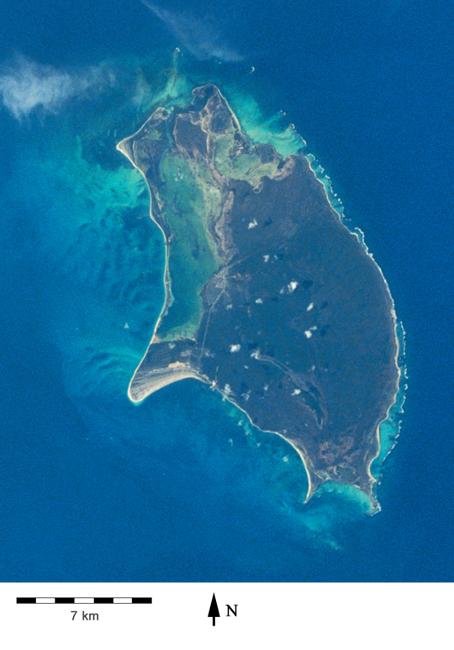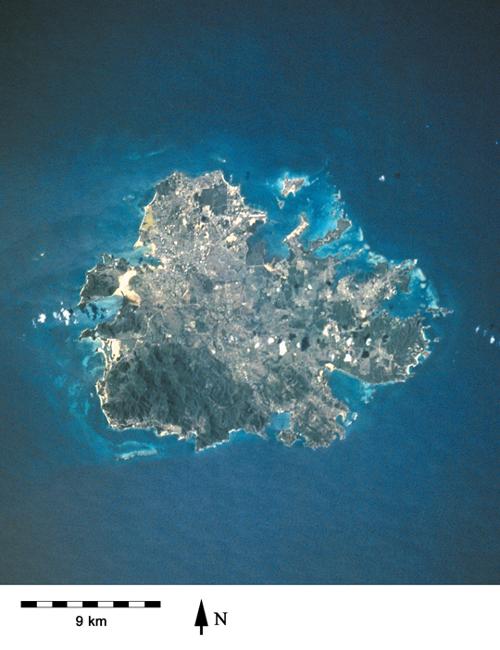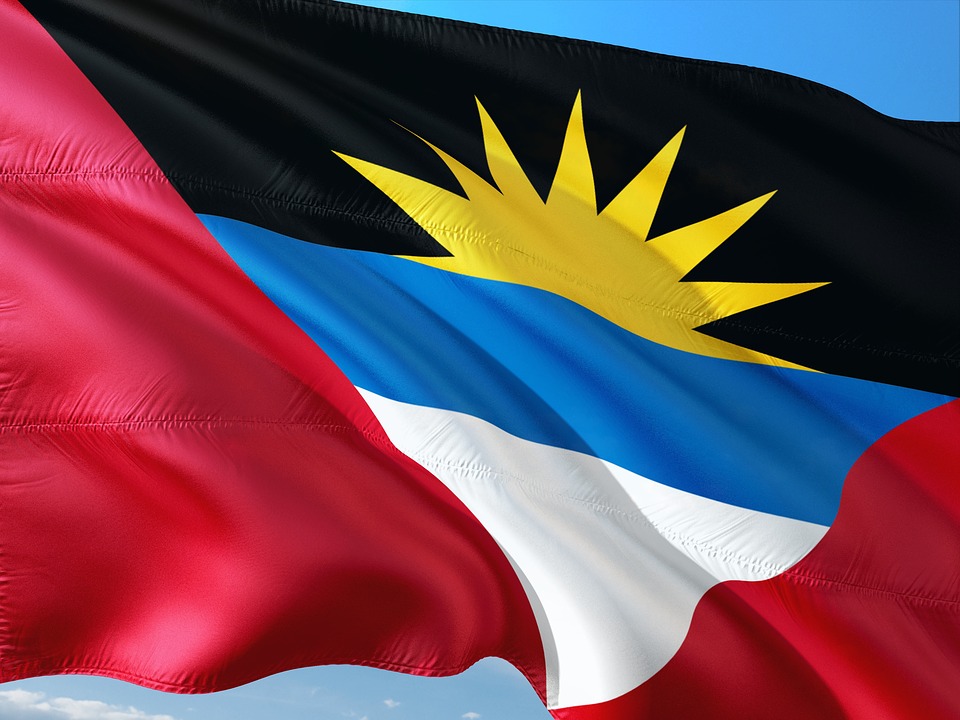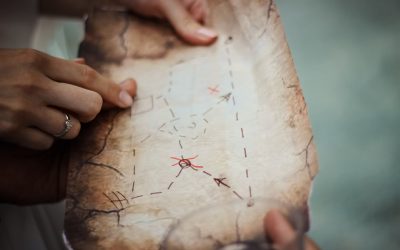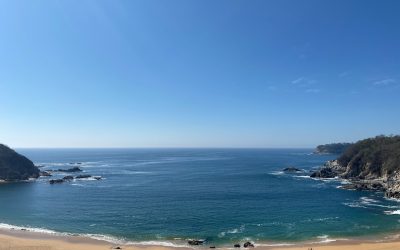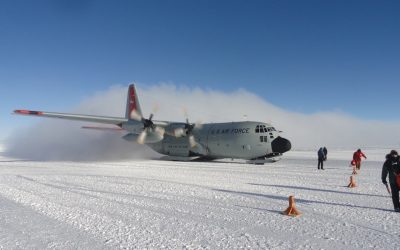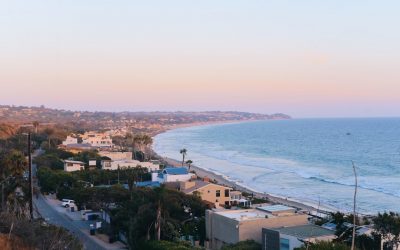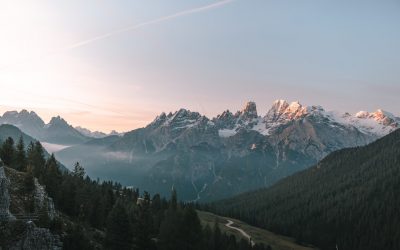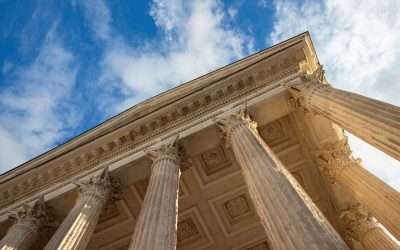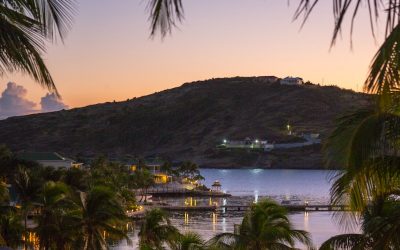Antigua and Barbuda

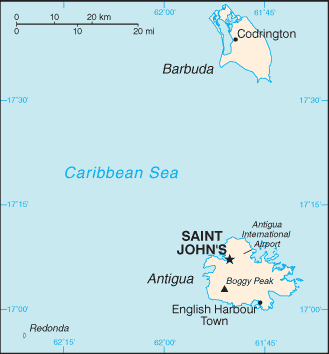
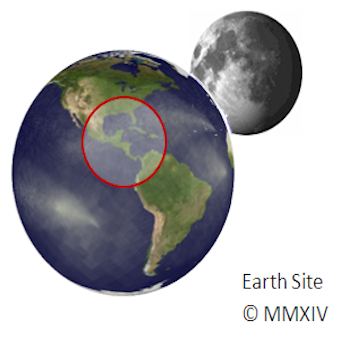
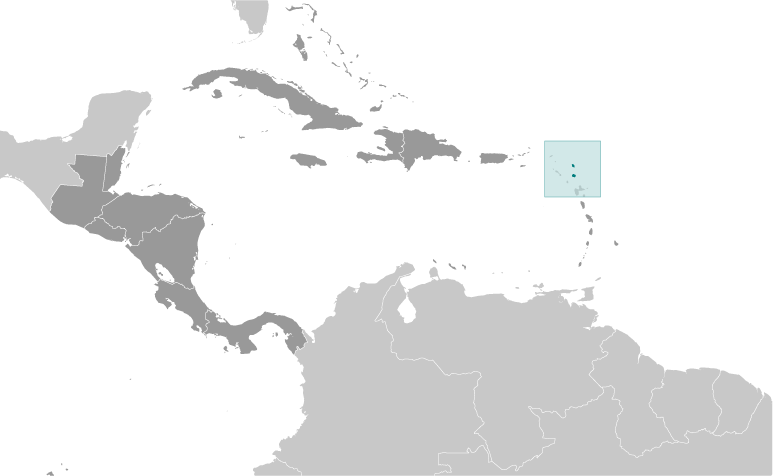
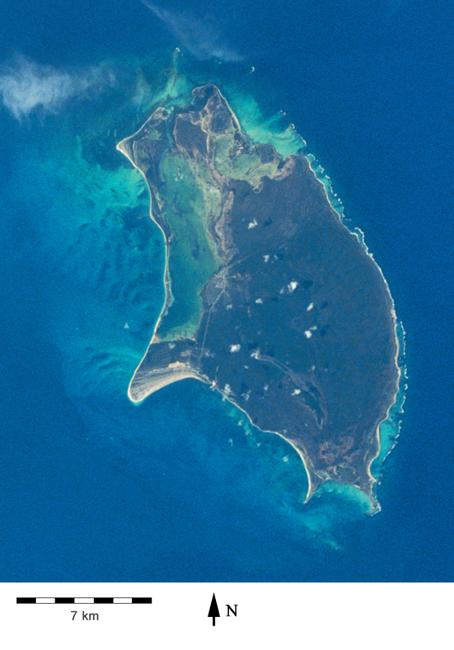
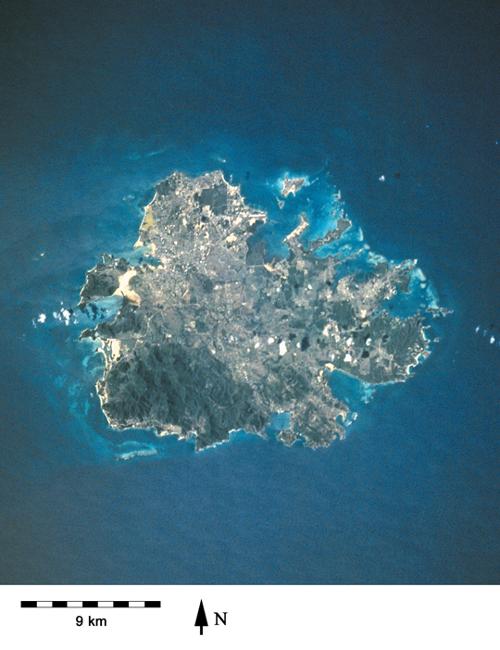
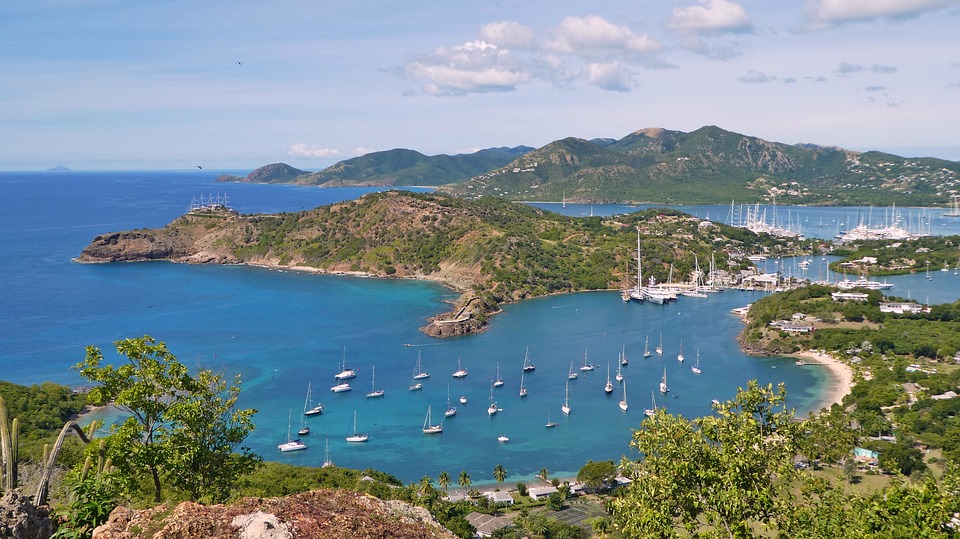
Commonwealth Member since the 1st of November 1981.
Capital: Saint John’s
Population (Estimated July 2012): 89,018
Area: 442km2 or 171mi2
Currency: Eastern Caribbean Dollar (EC$)
Official Language: English
Political Information: Constitutional Monarchy with Democratic Parliament
Official Religion: No Official Religion (approximately 76.4% of the population are Protestant, 10.4% are Roman Catholic, 7.4% have other religious beliefs and 5.8% have no or unspecified religious beliefs)
Highest Mountain: Mount Obama (formerly Boggy Peak) at 402m or 1,319 ft
GDP Official Exchange Rate (OER is more precise at gauging a countries economic power)
(Estimated 2011): $1.3 billion (US$) or £780 million(GBP)
GDP Purchasing Power Parity (PPP is good for gauging living conditions and use of resources but not as accurate as OER. This data has been calculated based on the sum value of all goods and services produced in the country valued at prices prevailing in the United States)
(Estimated 2011): $1.734 billion (US$) or £1.040 billion (GBP)
GDP (PPP) Per Capita (per member of the population estimated 2011): $22,100 (US$) or £13,260(GBP)
Time Zone (GMT/UTC): -4:00
Counties/Provinces/States: 6 parishes and 2 dependencies*; Barbuda*, Redonda*, Saint George, Saint John, Saint Mary, Saint Paul, Saint Peter, Saint Philip
Sources: CIA World Fact Book, Encyclopaedia Britannica,
Antigua and Barbuda, located in the heart of the Caribbean, is a popular tourist destination known for its stunning beaches, crystal-clear waters, and vibrant culture. Comprising two main islands, Antigua and Barbuda, this small nation has a rich history as a former British colony and gained independence in 1981. Today, it attracts visitors from around the world who come to experience its natural beauty, explore its historic sites, and immerse themselves in its unique culture.
History and Culture of Antigua and Barbuda
Antigua and Barbuda have a fascinating history that dates back to the arrival of the indigenous Arawak people around 2400 BC. The islands were later colonized by the Spanish in the late 15th century, but it was the British who had the most significant impact on the country’s history. Antigua became an important strategic base for the British Navy in the 18th century, and remnants of this colonial past can still be seen today in the form of historic forts and naval buildings.
The country’s cultural heritage is a vibrant mix of African, European, and indigenous influences. Music plays a central role in Antiguan and Barbudan culture, with genres such as calypso, reggae, and soca being popular among locals and visitors alike. Traditional dances like the Antiguan “benna” and “quadrille” are also performed during festivals and special occasions. The islands are also home to a thriving art scene, with local artists showcasing their work in galleries and exhibitions.
Geography and Climate of Antigua and Barbuda
Antigua and Barbuda are located in the Eastern Caribbean, with Antigua being the larger of the two islands. The country is known for its stunning coastline, which stretches for over 90 miles and is dotted with beautiful beaches. The islands are surrounded by coral reefs, making them a haven for snorkelers and divers.
The climate in Antigua and Barbuda is tropical, with warm temperatures year-round. The islands experience a dry season from December to April and a wet season from May to November. The wet season coincides with the hurricane season, which runs from June to November. While the islands are occasionally affected by hurricanes, they have a well-developed infrastructure and are well-prepared to handle such events.
Top Tourist Attractions in Antigua and Barbuda
Antigua and Barbuda offer a wide range of attractions for visitors to explore. One of the top tourist destinations is Nelson’s Dockyard, a UNESCO World Heritage Site located in English Harbour. This historic naval base was once the headquarters of the British Navy in the Caribbean and is now home to a museum, shops, and restaurants.
Another must-visit site is Shirley Heights, which offers panoramic views of the island and is famous for its Sunday evening parties known as “Jump Up.” Visitors can enjoy live music, local food, and breathtaking sunsets while soaking up the vibrant atmosphere.
For nature lovers, a visit to Stingray City is a must. Located off the coast of Antigua, this unique attraction allows visitors to swim with and feed southern stingrays in their natural habitat. It’s an unforgettable experience that offers a close encounter with these gentle creatures.
Beaches and Water Activities in Antigua and Barbuda
Antigua and Barbuda are renowned for their pristine beaches and crystal-clear waters. Some of the most popular beaches include Dickenson Bay, Half Moon Bay, and Jolly Beach. These beaches offer powdery white sand, calm turquoise waters, and plenty of opportunities for swimming, sunbathing, and water sports.
Snorkeling and diving are also popular activities in Antigua and Barbuda. The islands are home to numerous coral reefs teeming with colorful marine life, making them a paradise for underwater enthusiasts. There are several dive operators that offer guided tours and certification courses for all levels of experience.
Sailing is another popular water activity in Antigua and Barbuda. The islands are known for hosting world-class sailing events, including Antigua Sailing Week and the Antigua Classic Yacht Regatta. Visitors can charter a yacht or join a sailing tour to explore the island’s secluded coves and hidden beaches.
Cuisine and Local Delicacies in Antigua and Barbuda
Antiguan and Barbudan cuisine is a delicious fusion of African, European, and indigenous flavours. Fresh seafood is a staple of the local diet, with dishes like grilled lobster, red snapper, and conch being popular choices. The islands are also known for their use of local ingredients such as plantains, yams, and callaloo (a leafy green vegetable).
One of the most famous local dishes is “pepperpot,” a hearty stew made with meat, vegetables, and spices. Another popular dish is “fungi,” a cornmeal-based side dish that is often served with fish or meat. Visitors can sample these local delicacies at traditional restaurants known as “cookshops” or at street food stalls.
Festivals and Events in Antigua and Barbuda
Antigua and Barbuda are known for their vibrant festival culture, with events taking place throughout the year. The most famous festival is Carnival, which is held in July and features colorful parades, music, dancing, and elaborate costumes. It’s a celebration of the islands’ African heritage and is a must-see for visitors looking to immerse themselves in the local culture.
Another popular event is Antigua Sailing Week, which takes place in April and attracts sailors from around the world. This week-long regatta features thrilling races, parties, and live music, making it a highlight of the Caribbean sailing calendar.
Other cultural events and celebrations include the Antigua and Barbuda International Kite Festival, the Antigua and Barbuda Independence Festival, and the Wadadli Beer Calypso Monarch Competition. These events showcase the islands’ rich cultural heritage and provide visitors with a unique insight into local traditions.
Accommodation and Hospitality in Antigua and Barbuda
Antigua and Barbuda offer a wide range of accommodation options to suit every budget and preference. From luxury resorts to boutique hotels and guesthouses, there is something for everyone. Many of the resorts are located on or near the beach, offering stunning views and easy access to the water.
The hospitality industry in Antigua and Barbuda is known for its warm and friendly service. The locals take pride in welcoming visitors and ensuring they have a memorable stay. Whether you’re staying at a luxury resort or a small guesthouse, you can expect to be treated with genuine warmth and hospitality.
Transportation in Antigua and Barbuda
Getting around in Antigua and Barbuda is relatively easy due to the country’s small size. Taxis are readily available and can be found at the airport, hotels, and popular tourist areas. Rental cars are also available for those who prefer to explore the islands at their own pace.
The main island of Antigua has a well-developed road network, making it easy to navigate. However, it’s worth noting that driving is on the left-hand side of the road, as in the UK. Barbuda, on the other hand, has fewer roads and is best explored by foot or bicycle.
Investment and Business Opportunities in Antigua and Barbuda
Antigua and Barbuda offer attractive investment opportunities in various sectors, including tourism, real estate, agriculture, and renewable energy. The government has implemented business-friendly policies and tax incentives to attract foreign investors. The country’s stable political climate and strong legal framework make it an ideal destination for those looking to start a business or invest in property.
The tourism industry is a major contributor to the country’s economy, and there are opportunities for investment in hotels, resorts, and eco-tourism projects. The government has also introduced a Citizenship by Investment Program, which allows foreign investors to obtain citizenship in exchange for an investment in the country.
In conclusion, Antigua and Barbuda offer a unique blend of natural beauty, rich history, vibrant culture, and warm hospitality. Whether you’re looking for a relaxing beach getaway or an adventure-filled vacation, this Caribbean paradise has something to offer. From exploring historic sites and indulging in delicious cuisine to enjoying water sports and attending lively festivals, there is no shortage of things to see and do in Antigua and Barbuda. So why not plan your next trip or consider investing in this tropical paradise? You won’t be disappointed.
Political Boundaries of Antigua and Barbuda: Provinces, Districts, or Historical Boundaries.
Antigua and Barbuda, located in the eastern Caribbean, is a small island nation with a rich history and vibrant culture. Understanding the political boundaries of this country is crucial for effective governance and decision-making. Political boundaries define the territories and jurisdictions within which governments operate, and they play a significant role in shaping the social, economic, and political landscape of a nation. Summary Antigua and Barbuda is a sovereign nation consisting of two major islands and several smaller ones. The country’s political boundaries have evolved over time due to colonization and independence movements. Provinces play a significant role in Antigua and Barbuda’s political system, with each having its own government and leader. The country is divided into six districts, each with its own unique characteristics and challenges. Political boundaries have a significant impact on Antigua and Barbuda’s society, including access to resources and representation in government. Historical Boundaries of Antigua and Barbuda The political boundaries of Antigua and Barbuda have evolved over time due to various historical factors. The islands were originally inhabited by the indigenous Arawak and Carib peoples before being colonized by the Spanish in the late 15th century. The British later established control over the islands in the 17th century, and they remained under British rule until gaining independence in 1981. During the colonial period, Antigua and Barbuda were part of the British West Indies Federation, which included several other Caribbean territories. The boundaries of these territories were often redrawn to suit the needs of the colonial powers, resulting in changes to Antigua and Barbuda’s political boundaries. The Role of Provinces in Antigua and Barbuda’s Political...
Natural Resources of Antigua and Barbuda: Where Natural Resources are located In Antigua and Barbuda
Antigua and Barbuda, a small island nation located in the Caribbean, is blessed with a variety of natural resources that contribute significantly to its economy and the livelihoods of its people. These resources include minerals, agricultural land, forests, marine resources, and energy sources. The abundance of these resources has played a crucial role in shaping the country’s history and development. Natural resources are essential for the economic growth and development of any nation. In the case of Antigua and Barbuda, these resources provide employment opportunities, contribute to the country’s GDP, and support various industries such as agriculture, tourism, and manufacturing. They also play a vital role in ensuring food security and providing raw materials for industries. Summary Antigua and Barbuda is a small island nation in the Caribbean with a variety of natural resources. The geography of Antigua and Barbuda includes coral reefs, beaches, and hilly terrain. Natural resources in Antigua and Barbuda are located in various parts of the country, including the coast and interior. Mineral resources in Antigua and Barbuda include limestone, clay, and sand. Agricultural resources in Antigua and Barbuda include crops such as sugarcane, bananas, and vegetables. Overview of the Geography of Antigua and Barbuda Antigua and Barbuda consists of two main islands, Antigua and Barbuda, along with several smaller islands. It is located in the eastern Caribbean Sea, southeast of Puerto Rico. The country covers an area of approximately 440 square kilometers (170 square miles). The topography of Antigua is characterized by low-lying limestone formations with some volcanic hills in the southwest. Barbuda, on the other hand, is mostly flat with sandy beaches and...
Climate Zones of Antigua and Barbuda: Different climate regions Of Antigua and Barbuda
Antigua and Barbuda, located in the eastern Caribbean, is a small island nation consisting of two main islands – Antigua and Barbuda – along with several smaller islands. The country is known for its stunning beaches, crystal-clear waters, and vibrant culture. Understanding the climate zones of Antigua and Barbuda is crucial for both visitors and residents, as it helps in planning activities, packing appropriate clothing, and understanding the local environment. Summary Antigua and Barbuda has a variety of climate zones, including tropical, arid, humid, coastal, and inland. Barbuda Island has an arid climate, while Antigua Island has a humid climate. The coastal climate of Antigua and Barbuda is influenced by the sea, while the inland climate is influenced by the terrain. Antigua and Barbuda has a rainy season from June to November and a dry season from December to May. Climate change is a growing concern for Antigua and Barbuda’s ecosystem and future. The Tropical Climate of Antigua and Barbuda Antigua and Barbuda experience a tropical climate, characterized by high temperatures and abundant rainfall throughout the year. The average temperature ranges from 25°C (77°F) to 30°C (86°F), making it an ideal destination for those seeking warm weather. The tropical climate zone is home to a diverse range of flora and fauna, including palm trees, hibiscus flowers, and various species of birds. The Arid Climate of Barbuda Island Barbuda Island, which is located north of Antigua, has an arid climate zone. This means that it receives less rainfall compared to other parts of Antigua and Barbuda. The average temperature on Barbuda ranges from 26°C (79°F) to 31°C (88°F). The arid...
Population Density of Antigua and Barbuda
Antigua and Barbuda, a small island nation located in the Caribbean, has a population density that is of great importance to understand. Population density refers to the number of people living in a specific area, usually measured in square kilometers or square miles. Understanding population density is crucial as it provides insights into the distribution of people within a country, which in turn can have significant implications for social, economic, and environmental factors. Summary Antigua and Barbuda has a population density of 223 people per square kilometre. The country is located in the eastern Caribbean, consisting of two main islands and several smaller ones. Population growth in Antigua and Barbuda has been influenced by colonialism, slavery, and migration. As of 2021, the population of Antigua and Barbuda is estimated to be around 98,000 people. Factors such as limited land availability and economic opportunities contribute to the uneven distribution of population between urban and rural areas. Understanding the Geographical Location of Antigua and Barbuda Antigua and Barbuda consists of two main islands, Antigua and Barbuda, along with several smaller islands. It is located in the eastern Caribbean Sea, southeast of Puerto Rico. The islands are part of the Lesser Antilles, which are a group of islands that form an arc between the Greater Antilles and South America. The geographical location of Antigua and Barbuda has a direct impact on its population density. Being situated in the Caribbean Sea, Antigua and Barbuda have a tropical climate with warm temperatures year-round. This makes the islands an attractive destination for tourists, which in turn can influence population density. Additionally, the islands’ location also...
Terrain and Topography of Antigua and Barbuda: mountains, valleys, and plains.
Antigua and Barbuda, located in the eastern Caribbean, is a stunning island nation known for its beautiful beaches and crystal-clear waters. However, beyond its pristine coastline lies a diverse and fascinating terrain that is worth exploring. From its mountainous regions to its valleys and coastal plains, Antigua and Barbuda’s topography plays a crucial role in shaping the island’s climate, biodiversity, and agricultural industry. Understanding the island’s geography is essential for sustainable development and conservation efforts. Summary Antigua and Barbuda’s terrain is diverse, with mountainous regions, valleys, coastal plains, and unique karst topography. The mountainous regions of Antigua and Barbuda offer stunning views and are home to a variety of flora and fauna. The valleys of Antigua and Barbuda are low-lying areas that are important for agriculture and provide habitat for wildlife. The coastal plains of Antigua and Barbuda are home to many of the island’s towns and cities, as well as important ecosystems like mangroves and coral reefs. Antigua and Barbuda’s topography plays a significant role in shaping the climate and weather patterns of the islands. The Mountainous Regions of Antigua and Barbuda Antigua and Barbuda may be known for its beaches, but it also boasts some impressive mountainous areas. The highest point on the island of Antigua is Mount Obama, formerly known as Boggy Peak, which stands at 402 meters (1,319 feet) above sea level. This mountain offers breathtaking views of the surrounding landscape and is a popular hiking destination for both locals and tourists. In addition to Mount Obama, there are several other notable mountains on the island, including Signal Hill and Shirley Heights. These mountains provide...
Cultural or Historical Sites of Antigua and Barbuda: Important Cultural Landmarks or Historical Sites In Antigua and Barbuda
Antigua, a small island in the Caribbean, is known for its stunning beaches and crystal-clear waters. However, beyond its natural beauty, Antigua also boasts a rich history that is worth exploring. From colonial architecture to historic naval bases, the island is home to numerous historical sites that offer a glimpse into its past. When visiting Antigua, it is important to take the time to explore these sites and learn about the island’s fascinating history. Summary Nelson’s Dockyard is a UNESCO World Heritage Site and a historic naval base. Betty’s Hope is the oldest sugar plantation on Antigua. St. John’s Cathedral is an iconic landmark of colonial architecture. Devil’s Bridge is a natural wonder and symbol of African slave resistance. The Museum of Antigua and Barbuda preserves the islands’ cultural heritage. Nelson’s Dockyard: A Historic Naval Base and UNESCO World Heritage Site One of the most significant historical sites in Antigua is Nelson’s Dockyard. This historic naval base was established in the 18th century and played a crucial role in the British Navy’s operations in the Caribbean. Today, it is a UNESCO World Heritage Site and a popular tourist attraction. Touring Nelson’s Dockyard allows visitors to step back in time and experience what life was like during the height of the British Empire. The dockyard is home to numerous restored buildings, including the Admiral’s House, which now serves as a museum showcasing the history of the dockyard. Visitors can also explore the ruins of old warehouses and workshops, giving them a sense of the bustling activity that once took place here. Betty’s Hope: The Oldest Sugar Plantation on Antigua Sugar...
Discovering the Hidden Gems of Antigua and Barbuda: A Caribbean Paradise Awaits
Antigua and Barbuda is a small island nation located in the Caribbean Sea. It consists of two main islands, Antigua and Barbuda, along with several smaller islands. The country has a rich history and vibrant culture, with influences from its indigenous people, European colonizers, and African slaves. Today, Antigua and Barbuda is known for its stunning beaches, crystal-clear waters, and warm hospitality, making it a popular destination for tourists from around the world. Antigua and Barbuda’s location in the Caribbean makes it an ideal vacation spot for those seeking sun, sand, and relaxation. The islands are situated in the northeastern part of the Caribbean Sea, just east of Puerto Rico. With its tropical climate and average temperatures ranging from 75 to 85 degrees Fahrenheit year-round, Antigua and Barbuda offer perfect beach weather no matter when you visit. The country’s history dates back thousands of years, with evidence of indigenous settlements on the islands as early as 2400 BC. European colonization began in the 16th century when Christopher Columbus arrived in 1493. The islands were later colonized by the British in the 17th century and remained under British rule until gaining independence in 1981. This colonial history is still evident today in the architecture, language, and cultural traditions of Antigua and Barbuda. Key Takeaways Antigua and Barbuda is a stunning Caribbean paradise with beautiful beaches, rich culture, and diverse wildlife. The best beaches in Antigua and Barbuda are hidden gems waiting to be explored, offering crystal-clear waters and white sand. The local traditions and festivals of Antigua and Barbuda are a must-see, showcasing the island’s vibrant culture and history. The...
